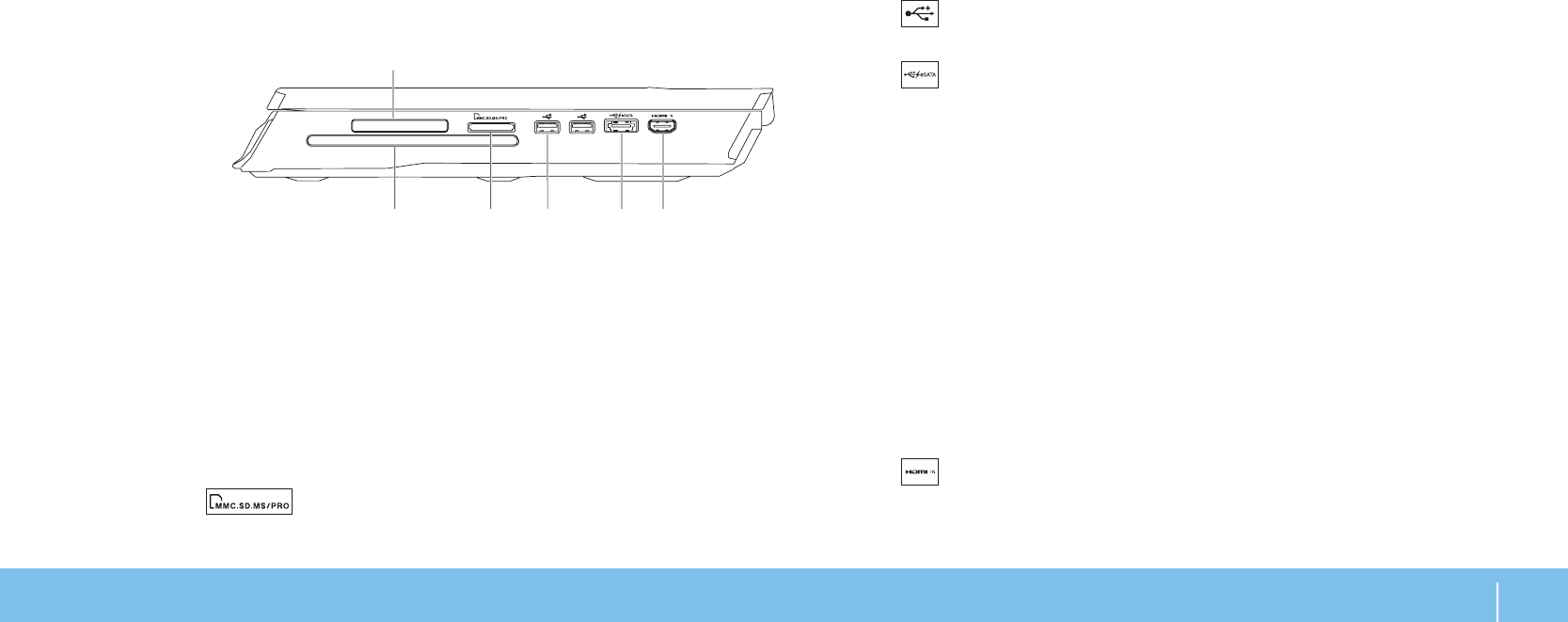
17
CHAPTER 2: GETTING TO KNOW YOUR LAPTOP
4
USB 2.0 connectors (2) — Connect to USB devices, such as a mouse,
keyboard, printer, external drive, or MP3 player.
5
eSATA/USB combo connector with USB PowerShare — Connects to
eSATA compatible storage devices (such as external hard drives or optical
drives) or USB devices (such as a mouse, keyboard, printer, external drive,
or MP3 player).
e USB Powershare feature allows you to charge USB devices when the
computer is powered on/o or in sleep state.
NOTE: Certain USB devices may not charge when the computer is powered
o or in sleep state. In such cases, turn on the computer to charge the
device.
NOTE: You can enable or disable the option of charging the USB devices when
the computer is powered o or in sleep mode through the BIOS settings.
NOTE: If you turn o your computer while charging a USB device, the device
stops charging. To continue charging, disconnect the USB device and
connect it again.
NOTE: e USB PowerShare is automatically shut o when only 10% of the
total battery life remains.
6
HDMI-input connector — Connects to the HDMI‑output connector on
your video device such as a DVD player, camcorder, or gaming device.
NOTE: e HDMI-input connector works only when the computer is on.
Right View Features
1
2 3 4 5 6
1 ExpressCard slot — Provides support for additional memory, wired and
wireless communications, multimedia, and security features. e slot
supports 54 mm Express cards.
NOTE: e ExpressCard slot is designed only for ExpressCards. e slot does
NOT support PC Cards.
2 Optical drive — Plays or records only standard-size (12 cm) CDs, DVDs, and
Blu‑ray Discs (optional). Ensure that the side with print or writing is facing
upward when inserting discs. For more information, see “Using the Optical
Drive“ on page 28.
3
9-in-1 Media Card Reader — Provides a fast and convenient way
to view and share digital photos, music, videos, and documents.


















